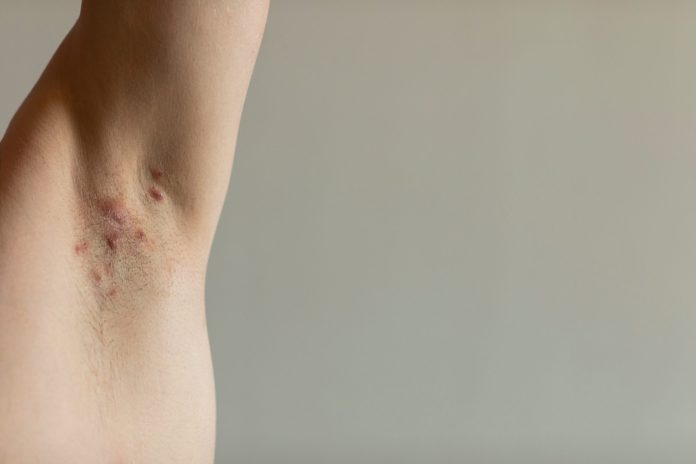Navigating Diagnostic Complexities in Hidradenitis Suppurativa and Crohn’s Disease: Modern and Ayurvedic Perspectives
Introduction
Hidradenitis Suppurativa (HS) and Crohn’s Disease (CD) are chronic inflammatory conditions that present significant diagnostic challenges due to their complex and overlapping symptoms. Accurate diagnosis is crucial for effective treatment, but it often requires a nuanced approach. This article explores the diagnostic hurdles associated with HS and CD from both modern and Ayurvedic perspectives, highlighting how each system’s unique methodologies contribute to a more comprehensive understanding of these conditions.
Diagnostic Challenges in Hidradenitis Suppurativa (HS)
Modern Diagnostic Challenges
- Misdiagnosis: HS is frequently misidentified as other skin conditions like boils, acne, or folliculitis due to similar presentations of pustules and nodules.
- Delayed Diagnosis: Many patients face substantial delays in diagnosis, sometimes spanning several years, due to a lack of awareness among healthcare providers and the general public.
- Lack of Specific Tests: There are no definitive tests for HS; diagnosis relies heavily on clinical evaluation, patient history, and physical examination.
- Comorbidities: HS is often associated with conditions like metabolic syndrome, other inflammatory diseases, and psychological disorders, which can complicate the diagnostic process.
Ayurvedic Diagnostic Approach
- Dosha Imbalance Identification: In Ayurveda, HS is viewed as a result of an imbalance in Kapha and Pitta doshas. Diagnosis involves a thorough examination of the patient’s Prakruti (constitution) and Vikruti (current imbalance).
- Pulse Diagnosis (Nadi Pariksha): Ayurvedic practitioners use pulse diagnosis to assess dosha imbalances and detect underlying health issues.
- Clinical Examination: Observation of skin lesions, inquiries about digestive health, and assessment of lifestyle factors help in determining the root causes.
- Relevant Shloka: “Rogastu dosha vaishamyam doshasya prakrutir bhavet” (Ashtanga Hridaya, Sutrasthana 1.20) — “Disease arises from the imbalance of doshas, and health is the balance of doshas.”
Diagnostic Challenges in Crohn’s Disease (CD)
Modern Diagnostic Challenges
- Overlapping Symptoms: CD shares symptoms with other gastrointestinal disorders like irritable bowel syndrome (IBS) and ulcerative colitis, making differentiation difficult.
- Invasive Procedures: Diagnosis often involves invasive procedures such as colonoscopy, endoscopy, and biopsy, which can be uncomfortable and stressful for patients.
- Imaging and Biomarkers: While imaging techniques (MRI, CT scans) and biomarkers (C-reactive protein, fecal calprotectin) are useful, they are not always definitive.
- Variable Presentation: CD can affect any part of the gastrointestinal tract, leading to a wide array of symptoms, complicating consistent diagnosis.
Ayurvedic Diagnostic Approach
- Tridosha Analysis: CD is primarily linked to Vata and Pitta imbalances. Diagnosis involves evaluating symptoms, diet, lifestyle, and mental health to understand dosha imbalances.
- Detailed History (Roga and Rogi Pariksha): A comprehensive patient history, including dietary habits, stress levels, sleep patterns, and bowel movements, is crucial.
- Stool Examination (Mala Pariksha): Analyzing stool characteristics provides insights into the patient’s digestive and excretory health.
- Relevant Shloka: “Vata pitta kapha mala mutra sweda asti majja shukra sira dhamani srotamsi” (Charaka Samhita, Sutrasthana 28.15) — “Vata, Pitta, and Kapha, along with waste products (mala), urine (mutra), sweat (sweda), bones (asthi), marrow (majja), semen (shukra), vessels (sira), and channels (srotamsi), must be examined.”
Integrative Diagnostic Approaches
Combining Modern and Ayurvedic Diagnostics
- Holistic Patient Evaluation: Integrating detailed patient history and physical examinations from both modern and Ayurvedic perspectives to achieve a comprehensive understanding of the patient’s health.
- Use of Advanced Imaging and Biomarkers: Employing modern diagnostic tools like colonoscopy, MRI, and specific biomarkers alongside Ayurvedic diagnostic techniques to ensure thorough evaluation.
- Personalized Diagnosis and Treatment Plan: Utilizing the strengths of both systems to create a customized and effective treatment plan based on the patient’s unique needs and constitution.
- Regular Monitoring and Adjustments: Continuously monitoring the patient’s progress with both modern medical tests and Ayurvedic assessments to make necessary adjustments to the treatment plan.
Conclusion
Diagnosing Hidradenitis Suppurativa and Crohn’s Disease presents complex challenges that require a sophisticated approach combining both modern and Ayurvedic diagnostic methods. By integrating detailed clinical evaluations, advanced imaging, and comprehensive dosha assessments, healthcare providers can offer more accurate diagnoses and personalized treatment plans. This integrative approach addresses not only the symptoms but also the root causes, leading to improved overall health and well-being.
For those seeking a holistic and integrative approach to managing HS and CD, EliteAyurveda Specialist Clinic offers personalized diagnostic and treatment plans. Visit EliteAyurveda to learn more about our comprehensive care and expert guidance. Embrace the synergy of Ayurveda and modern medicine for effective management and long-term relief from chronic inflammatory conditions.
Related-
Know More About Ayurveda Treatments for Dermatology.
GET IN TOUCH


Recent comments